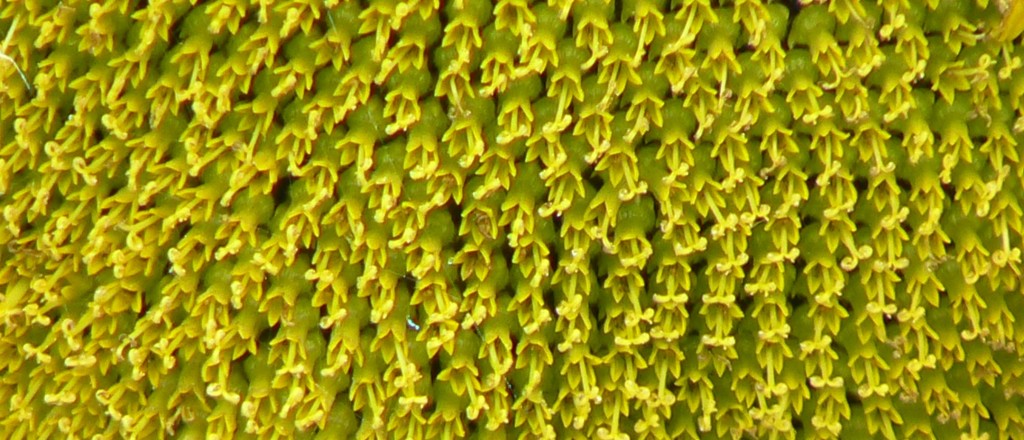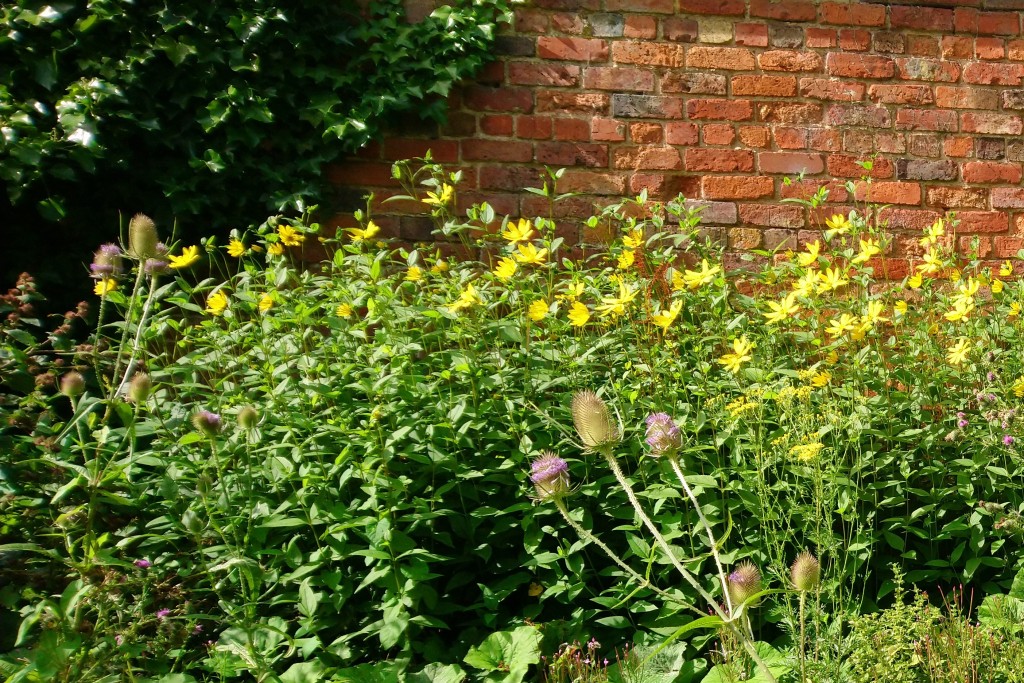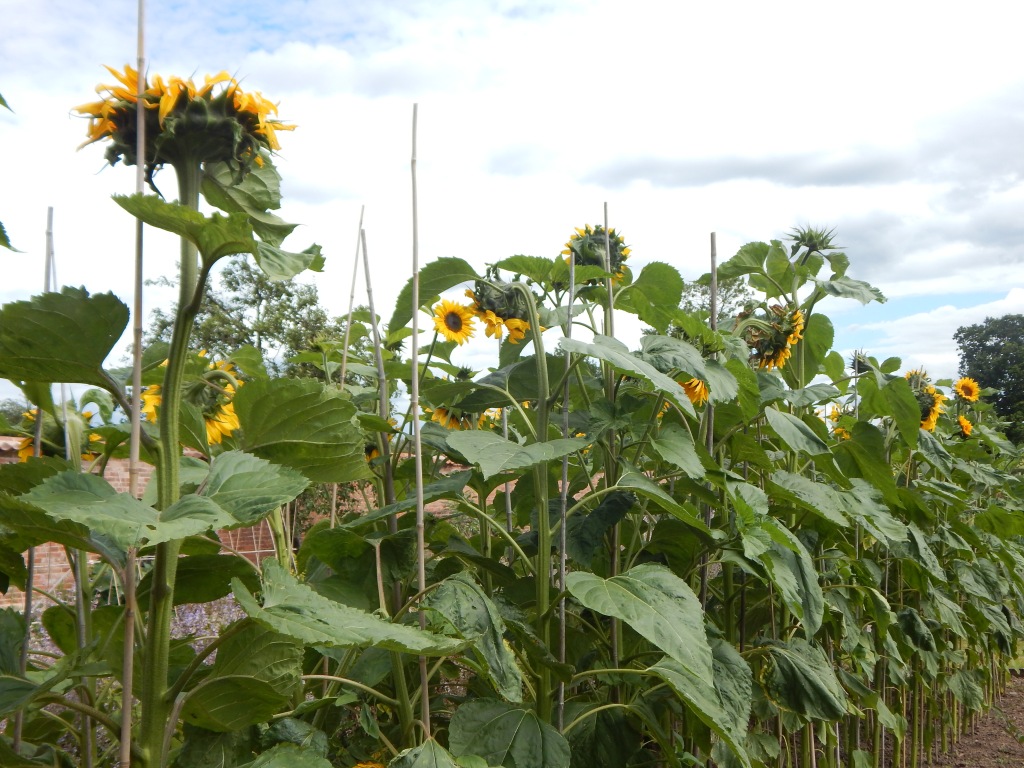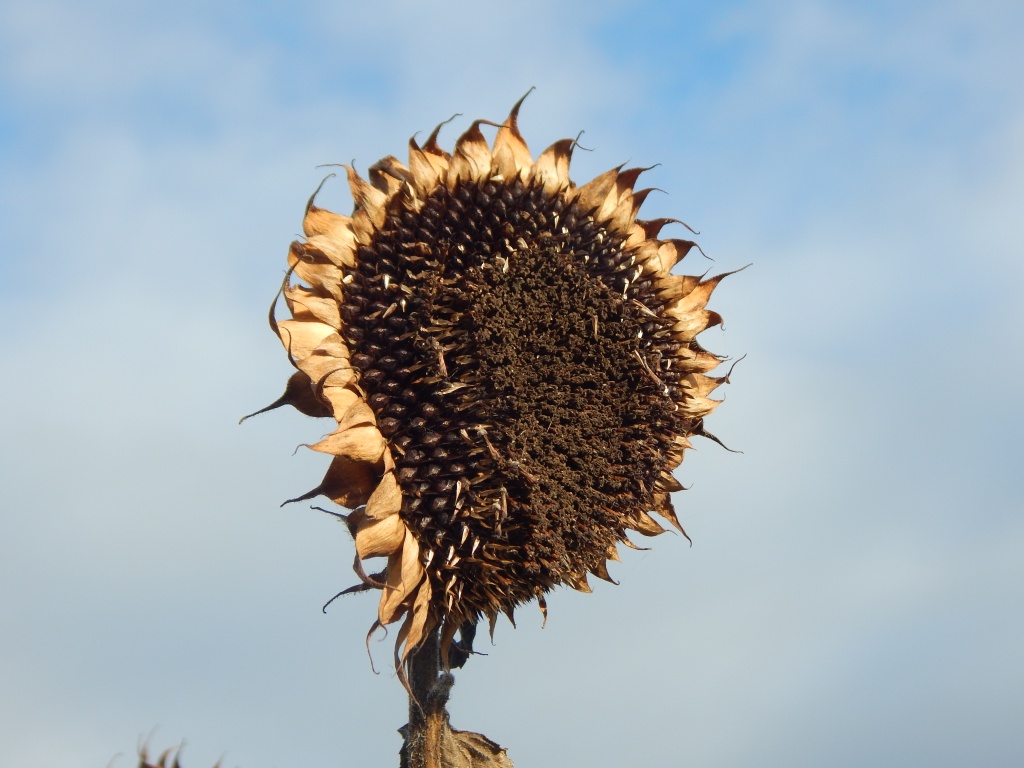
[171] Helianthus annuus, Sunflower
Introduction
Helianthus annuus, the Sunflower, is a plant in the Aster family well-known for the impressive size of its flower heads (inflorescences.)
It won’t surprise you that other species of Helianthus are called sunflowers, or that Helianthus annuus is more formally known as the Common Sunflower.
Taxonomy
Kingdom – Plants
Division – Vascular Plants
Class – Angiosperms (Flowering Plants)
Order – Asterales
Family – Asteraceae
Subfamily – Asteroideae
Supertribe – Helianthodae
Tribe – Heliantheae
Genus – Helianthus
Scientific Name – Helianthus annuus
Name
Sunflower may be derived from the shape of its flower head or from its heliotropic nature. In summer the flowers turn to face the sun.
You have probably absorbed enough Latin and Ancient Greek by now to know that heli-anthus means sun-flower. Helianthus has a number of perennial species, so the Common Sunflower derives its species epithet from its annual status.
Description
The wild Sunflower is a many-branched plant, with many flower heads but the cultivated version has a single tall stem with a single large inflorescence.
As a typical Aster, the flower head has an outer circle of ray florets, that look like petals. These are infertile and usually yellow (But cultivated varieties come in other colours.)
The inner disk florets each develop into a sunflower seed. These consist of interlocking spirals, typically 34 in one direction and 55 in the other. There can be as many as 89 and 144. [You may notice a developing Fibonacci sequence here.]






Habitat and use
All Helianthus species come from the Americas and they have been cultivated in Central Mexico for at least four thousand years It was originally grown for its edible seeds but is now also very widely cultivated as a source of sunflower oil, as a forage crop, and for birdseed.
It is widely cultivated as an ornamental garden plant or show plant and has named varieties and cultivars. many varieties are hybridized with other Helianthus species to make them perennial.
Other Notes
I can’t remember if I have seen farmed Sunflowers in this country but I have certainly seen fields of them in Italy and elsewhere.
I have certainly seen a specimen plant three or four metres high within a hundred metres of my home.
A Fibonacci sequence drives its terms by adding the previous two terms. If you start with two ones it goes: 1, 1, 2, 3, 5, 8, 13, 21, 34, 55, 89, 144, …
See also
I don’t need to add to what you already know about the Aster family.
You will remember that in [111] Artichoke, we mentioned the Jerusalem artichoke, Helianthus tuberosus, a similar plant native to North America and widely cultivated there for its tuberous roots as a food. Its roots taste somewhat similar to the Artichoke and Jerusalem is derived from girasole, the Italian for the sunflower. (Gira-sole means turn to the sun)
I am sure you all found the Common Carder Bee, [052] Bombus pascuorum, collecting nectar and pollen from one of the flowers.
